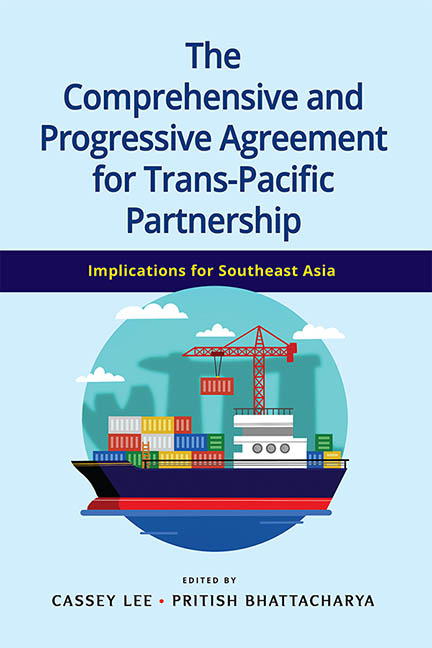Book contents
- Frontmatter
- Contents
- Preface
- Abbreviations
- About the Contributors
- 1 Introduction
- 2 The Economics of the CPTPP and RCEP: Asia Pacific Trade Agreements without the United States
- 3 The TPP and CPTPP: Truths about Power Politics
- 4 The Investment Chapter and ISDS in the CPTPP: Lessons from and for Southeast Asia
- 5 Intellectual Property in the CTPP and Access to Medicines A Thai Perspective
- 6 New Rules for State-Owned Enterprises in the CPTPP
- 7 Impact of the CPTPP on Japanese Manufacturing Affiliates in ASEAN
- 8 Reassessing Malaysia’s Export Opportunities in the TPP and CPTPP
- 9 Impact of the CPTPP on Vietnam
- 10 Should Thailand Join the CPTPP?
- 11 Indonesia, the TPP and CPTPP: Hold Your Breath
- Index
1 - Introduction
Published online by Cambridge University Press: 08 October 2021
- Frontmatter
- Contents
- Preface
- Abbreviations
- About the Contributors
- 1 Introduction
- 2 The Economics of the CPTPP and RCEP: Asia Pacific Trade Agreements without the United States
- 3 The TPP and CPTPP: Truths about Power Politics
- 4 The Investment Chapter and ISDS in the CPTPP: Lessons from and for Southeast Asia
- 5 Intellectual Property in the CTPP and Access to Medicines A Thai Perspective
- 6 New Rules for State-Owned Enterprises in the CPTPP
- 7 Impact of the CPTPP on Japanese Manufacturing Affiliates in ASEAN
- 8 Reassessing Malaysia’s Export Opportunities in the TPP and CPTPP
- 9 Impact of the CPTPP on Vietnam
- 10 Should Thailand Join the CPTPP?
- 11 Indonesia, the TPP and CPTPP: Hold Your Breath
- Index
Summary
Overview
The appetite for regional economic integration has waxed and waned over time. Since the failure of the Doha Development Round of multilateral trade negotiations in 2008, countries in Southeast Asia have continued to show interest in greater regional economic integration. This has manifested in several forms and at several fronts—both intra- and inter-regionally. A key initiative that pre-dates the collapse of the Doha Round is the ASEAN Economic Community (AEC), which was formally established on 31 December 2015. It remains a key focal point for regional economic integration for ASEAN member countries. Simultaneously, ASEAN countries have also negotiated the free trade agreements (FTAs) with other countries that already have FTAs with the Association's member countries.
A smaller subset of Southeast Asian nations—namely Brunei, Malaysia, Vietnam and Singapore—and eight other countries from the Asia Pacific came together to participate in the Trans-Pacific Partnership (TPP). Even though the TPP negotiations were successfully conclude and the agreement was signed in February 2016, the United States’ withdrawal from the TPP cast significant doubts on its future. The remaining eleven countries subsequently renegotiated the agreement successfully, resulting in the signing of the Comprehensive and Progressive Agreement for Trans-Pacific Partnership (CPTPP) in March 2018. To date, seven of the TPP signatory countries have ratified the CPTPP, where it has entered into force. Of the four Southeast Asian nations that have signed the CPTPP, only two countries—Singapore and Vietnam—have ratified the agreement; Brunei and Malaysia have yet to do so at the time of writing.
The CPTPP, in its current form and in its earlier manifestation as the TPP, has been touted as a “twenty-first century trade agreement”—a lofty phrase that conveys the agreement's comprehensiveness and its usefulness as a benchmark for all other subsequent trade deals. Despite this, there is clearly no consensus about the impact of the CPTPP in terms of its costs and benefits. To complicate matters, such calculus—as some have argued—extends beyond economics. The political economy of trade agreements is also not confined to domestic politics.Regional geopolitics matter, too. The ongoing trade dispute between the United States and China exemplifies this. This brings us to the goal of this edited volume.
- Type
- Chapter
- Information
- Publisher: ISEAS–Yusof Ishak InstitutePrint publication year: 2021

